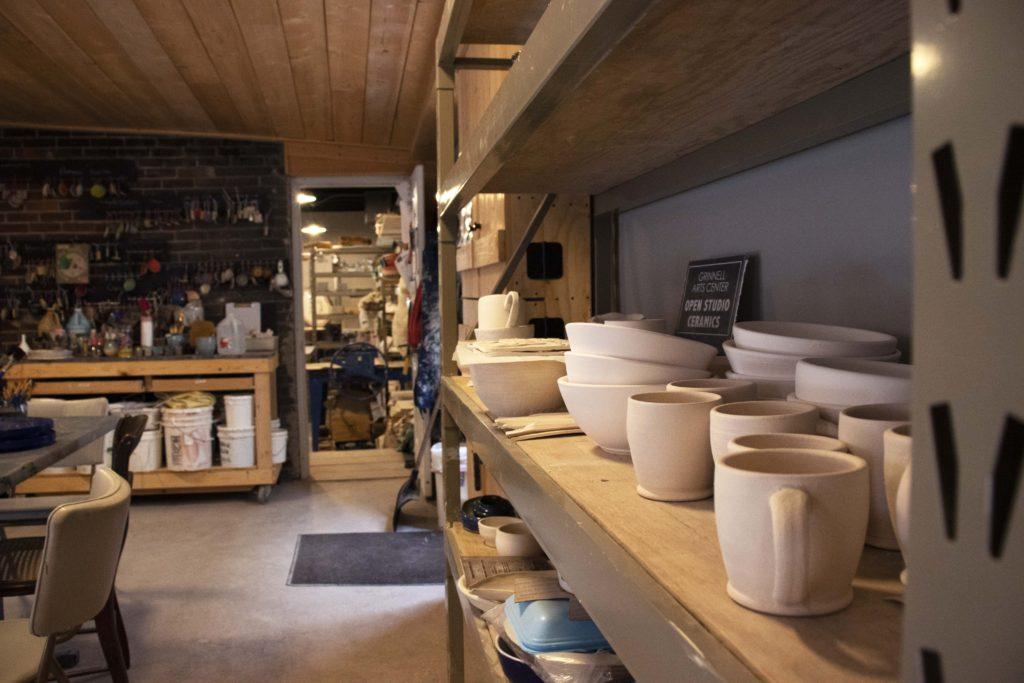Sitting around a table in the front of the STEW Makerspace in downtown Grinnell, a group of 12 college students have a lively discussion about hands. They share ideas and personal anecdotes relating to hands and their relation to the world at-large. The discussion, prompted by an excerpt from London School of Economics Professor Richard Sennett’s book “The Craftsman,” is facilitated by Professor Kelly Maynard, history. The class is called Material Culture Studies, and it is the first course at Grinnell College to be held entirely at the STEW Makerspace.
Craig Gibbens, the program and education coordinator for the Grinnell Arts Council, serves an important role in maintaining and supporting community involvement at the STEW Makerspace. He sees the class as a vital step in increasing student involvement in the community, saying “the goal [of the Makerspace] is to have college students and community members be in the same space and learn from each other.”
Holding classes at the Makerspace encourages students to utilize the Makerspace on their own time by exposing them to the diversity of its offerings. The interdisciplinary field of Material Culture Studies draws from art history, museum studies, gender and sexuality studies, religious studies, philosophy, anthropology and history. The class is set up to explore every one of these disciplines through reading, discussion, creation and writing. The ways in which people interact with objects, both ordinary and extraordinary, is the central question that drives the pedagogical methods of the class.
Class time is structured so that the first hour is dedicated to discussion driven by the readings. The second hour consists of kinesthetic learning, in which the class gathers to learn how to throw a bowl on a pottery wheel, create pinch pots, use a sewing machine or carve wood. The first few weeks of the course are dedicated to creation using clay. Students will then delve into woodwork, and by the end, they will have worked with textiles. Upon the course’s conclusion, every student will have created a bowl, a spoon and a placemat. After an hour of creating, the class wraps up with reflective journaling, where students can write about whatever comes to mind.
Vivian Lillskau `25 is one of the 12 lucky students taking the class. “[The class] takes me back to being very young,” said Lillskau.
She attributes this sense of nostalgia to the hour allotted every day for the student’s creative endeavors. In the back of the Makerspace, students are given the opportunity to unleash their inner child.
The time is unstructured, which allows for the experimental and kinesthetic learning essential to the class to take form. The formation of community and a space for experimentation is also an integral aspect of the class.
“[Professor] Maynard tries to create an environment where we all feel comfortable with messing up,” said Lillskau.
The three-hour sessions are full of encouragement and advice from Maynard, whether it be related to a story told during discussion or a student trying their hand at the pottery wheel. This creates an environment conducive to vulnerability, which Lillskau appreciates.
Many elements place this course in a league of its own, but even beyond it taking place in the Makerspace or consisting of a mere 12 students, Lillskau describes “the act of creating and failing together” as the principal component that stimulates the powerful bonds already forming in the class.




































































